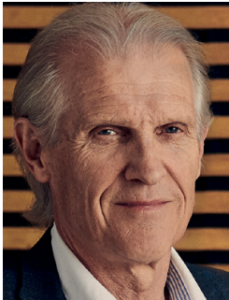What are we thinking?
Here our researchers and collaborators share their insights on remote work and digital organizing from different viewpoints.
What is hybrid work?
‘Hybrid is something that is formed by combining two or more things.’ (The Britannica Dictionary)
Because so many things are made up of two or more things such as plants (‘a hybrid of two roses’), vehicles (‘a hybrid car’), and persons (‘a Finnish-Congolese background’), it is better to focus only on hybrid work (HW), organisations, and workplaces. In any case, the basic concepts of ‘hybridity’, ‘hybrid work’, ‘hybrid organization’ or ‘hybrid workplace’ are still open and evolving, leading to ask: what are these ‘two or more things’ that justify using the terms that describe some phenomena in working life as ‘hybrid’?
This discussion, defining and sketching of ‘hybrid work’ started soon after the first phase of the COVID-19 pandemic in Autumn 2020 and has continued since as its implementation like a tide. The discussion concerned the time after the pandemic and what working life and workplaces would be like. I studied this phenomenon with postdoctoral researcher Outi Vanharanta during 2022 funded by Eurofound. We did our analysis by reviewing meta-analyses and literature reviews of remote and telework, empirical research reports and journal articles summarizing COVID-19-related telework findings, and professional publications, reports and articles often focusing on challenges and expectations of future hybrid work. Most data was collected through a standardised questionnaire circulated to the Network of Eurofound Correspondents (NEC) covering all the EU27 Member States. Based on our analyses, we concluded that ‘hybrid work’ is:
• HW is built on basic and sub-elements of physical, virtual, social, and time-related spaces and their features on individual, team, organisational, and societal levels.
• It is a dynamic entity transforming in time driven by changes in the purpose, needs, context, and resources of an actor. Stable conditions tend to freeze the HW configuration.
• An individual level formulation would be the following: ‘hybrid work’ is defined as any type of work arrangement where a worker operates in a sustainable manner alone or with others, as agreed upon between the worker and organisation, based on the latter’s purpose, the former’s needs and tasks, and the context, with flexibly regarding the time and place of the work – on the employer’s premises or default location or remotely at home, other locations or on the road – using digital technologies such as laptops, mobile phones and the internet.’
So, ‘Hybrid work’ can be characterised as a type of ‘flexible work’ as opposite to permanent, fixed arrangements of work such as ‘office work’, ‘remote and telework at home’, ‘home-based work’ and others. Our findings will be published early next year as a research report of Eurofound with the working title ‘Hybrid Work in Europe: Concept and its Bases’
Mikä on hybridityö?
”Hybridi on jotain, joka muodostuu yhdistämällä kaksi tai useampi asiaa” (Britannica-sanakirja)
Koska niin monet asiat koostuvat kahdesta tai useammasta asiasta, kuten kasvit (”kahden ruusun hybridi”), ajoneuvot (”hybridiauto”) ja ihmiset (”suomalais-kongolainen tausta”), on parempi keskittyä vain hybridityöhön, -organisaatioihin ja -työpaikkoihin. Joka tapauksessa peruskäsitteet “hybridisyys”, ”hybridityö”, ”hybridiorganisaatio” tai ”hybridityöpaikka” ovat edelleen avoimia ja kehittyviä, mikä johtaa kysymykseen: mitkä ovat ne ”kaksi tai useampia asioita”, jotka oikeuttavat kuvaamaan jotakin työelämän ilmiötä ”hybridinä”?
Keskustelu ”hybridityöstä”, sen määrittely ja luonnostelu alkoivat COVID-19-pandemian ensimmäisen vaiheen jälkeen syksyllä 2020 ja on jatkunut siitä lähtien kuin vuorovesi. Keskustelu koski pandemian jälkeistä aikaa ja sitä, millaista työelämä ja työpaikat tulisivat olemaan. Tutkin ilmiötä tutkijatohtori Outi Vanharannan kanssa Eurofoundin rahoittamana vuonna 2022. Teimme analyysimme etätyötä koskevien meta-analyysien ja kirjallisuuskatsauksien, empiiristen tutkimusraporttien ja lehtiartikkeleiden avulla. Niissä tiivistettiin COVID-19:ään liittyviä etätyön tuloksia. Lisäksi käytimme ammattijulkaisuja, erilaisia raportteja ja artikkeleita, jotka keskittyivät usein tulevan hybridityön haasteisiin ja sitä koskeviin odotuksiin. Eniten tietoja kerättiin standardoidulla kyselylomakkeella, joka jaettiin Eurofoundin yhteyshenkilöverkostolle, joka kattoi kaikki EU27:n jäsenvaltiot. Analyysiemme perusteella päättelimme, että
• Hybridityö perustuu fyysisten, virtuaalisten, sosiaalisten ja aikaan liittyvien tilojen perus- ja alaelementteihin ja niiden ominaisuuksiin yksilö-, tiimi-, organisaatio- ja yhteiskuntatasolla.
• Kyseessä on dynaaminen kokonaisuus, joka muuttuu ajassa toimijan tarkoituksen, tarpeiden, kontekstin ja resurssien muutosten ohjaamana. Vakaat olosuhteet pyrkivät ”jäädyttämään” hybridin työn koostumuksen.
• Yksittäisen työntekijän tasolla: ”Hybridityö (HT) on mikä tahansa työjärjestely, jossa työntekijä toimii kestävällä tavalla, yksin tai muiden kanssa, sovitusti organisaation tarkoituksen, sekä työntekijän tarpeiden ja tehtävien sekä kontekstin perusteella, joustavasti milloin tahansa ja missä tahansa – työnantajan tiloissa tai oletetussa päätyöpaikassa tai etänä kotona, muissa paikoissa tai tien päällä – käyttämällä digitaalisia teknologioita, kuten kannettavia tietokoneita, matkapuhelimia ja Internetiä.”
Niinpä ”hybridityötä” voidaan luonnehtia eräänlaiseksi ”joustavaksi työksi”, joka on vastakohta pysyville, kiinteille työjärjestelyille, kuten ”toimistotyö”, ”etätyö kotona”, ”kotoa käsin tehtävä työ” ja muut. Tuloksemme julkaistaan ensi vuoden alussa Eurofoundin tutkimusraporttina, jonka työnimi on ”Hybrid Work in Europe: Concept and its Bases” (https://www.eurofound.europa.eu/publications/report/).

Senior advisor, professor (emer.) of work and organizational psychology at the Department of Industrial Engineering and Management, Aalto University
